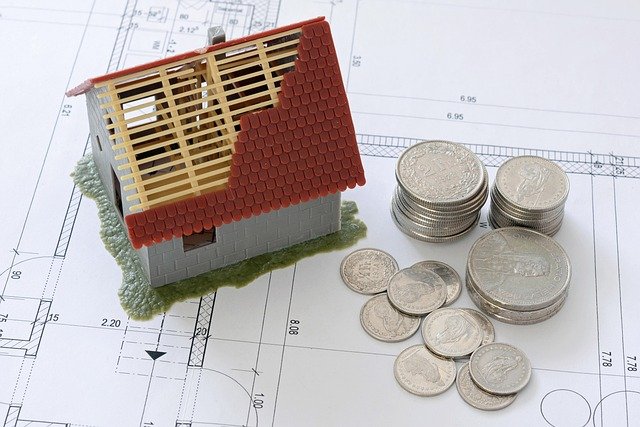Measuring renovation ROI for income-generating properties
Renovation projects for income-generating properties require careful measurement to ensure capital improvement dollars translate into higher net operating income and long-term value. This article outlines practical metrics, analytical approaches, and common cost considerations landlords and investors can apply to assess renovation return on investment, while highlighting tools and financing approaches used in practice.

Assessing renovation ROI for income-generating properties means connecting upfront capital outlay to measurable performance changes: rent, occupancy, operating costs, and long-term valuation. Owners should distinguish between cosmetic updates that reduce vacancy and structural upgrades that improve resilience and lower maintenance. A clear baseline—current rents, average vacancy, tenant turnover, and operating expenses—lets you model expected income and cash flow after renovation and estimate payback periods and internal rate of return.
Valuation metrics to track
Valuation changes after renovation often rest on net operating income (NOI) and comparable market values. Use capitalization rate adjustments to estimate value uplift: a predictable increase in NOI typically corresponds to a higher market valuation. Also track market metrics such as rent per square foot, comparable sales in infill and similar zoning neighborhoods, and how renovations influence appraised value. For fractional ownership models, valuation must reflect both physical improvements and changes in marketability for shared-investment buyers.
How analytics inform ROI decisions
Data-driven analytics let investors separate improvements that move the needle from those that don’t. Analyze historical vacancy and leasing velocity, rent growth trends, tenant demographics, and unit-level profit and loss statements. Scenario modeling—sensitivity testing around vacancy, rent growth, and cap rates—helps quantify risk. Digital tools such as property management analytics, lease-level dashboards, and demand-side data from local services improve accuracy when forecasting the expected uplift from a given renovation.
Sustainability and resilience impacts
Sustainable upgrades and resilience measures can reduce operating costs and appeal to tenants seeking lower utility bills or more durable buildings. Energy efficiency improvements, water-saving fixtures, and resilient roofing or flood mitigation may qualify for incentives or lower insurance costs, which should be included in ROI calculations. Consider lifecycle costs and potential zoning incentives for green upgrades. For many investors, sustainability investments change the tenant mix and leasing terms, supporting longer tenancies and lower vacancy over time.
Financing options and fractional approaches
Financing influences renovation feasibility and ROI timelines. Options include cash reserves, construction loans, home-equity lines, and tenant-in-place financing. Fractional investment platforms and joint-venture structures can spread upfront costs among multiple investors, but they add complexity to returns distribution. Compare loan interest, term, and fees against projected incremental NOI to understand the payback period. Always include financing costs in your cash-flow models and stress-test for interest rate or leasing volatility.
Renovation choices affecting vacancy and tenants
Target renovations to reduce vacancy and improve tenant retention: durable finishes, updated kitchens and baths, improved common areas, and amenities relevant to your tenant profile. Infill properties in denser neighborhoods may benefit from space reconfiguration to add leasable units or improve functionality. Lease structuring—shorter terms with higher turnover or longer leases with slightly lower rent—influences how quickly renovation costs are recovered. Track turnover costs and tenant acquisition expense so you can quantify how renovation reduces vacancy-related losses.
| Product/Service | Provider | Cost Estimation |
|---|---|---|
| Renovation contracting (general) | Local contractors / Angi | $50–$200 per sqft (varies by scope and region) |
| Digital twin scanning | Matterport | $150–$500 per property scan; software subscriptions vary ($9–$349/month) |
| Virtual tour creation | Zillow 3D Home / local photographers | $0–$300 depending on DIY vs. professional service |
| Property management (reduce vacancy) | Buildium / local managers | 4–12% of monthly rent or fixed monthly fees |
Prices, rates, or cost estimates mentioned in this article are based on the latest available information but may change over time. Independent research is advised before making financial decisions.
Digital twin and virtual tour tools
Virtual tours and digital twin technology support faster leasing and better remote underwriting. Matterport-style scans and interactive floor plans improve listing quality, decrease time on market, and can reduce physical showing costs—especially for fractional or remote investors evaluating infill opportunities. Incorporate the cost of these services into marketing budgets and measure conversion rates from listings to signed leases to evaluate incremental ROI.
Conclusion
Measuring renovation ROI for income-generating properties requires a mix of valuation methods, analytics, cost-aware budgeting, and understanding tenant dynamics. Integrate financing costs, realistic vacancy projections, and sustainability or resilience benefits into models, and use digital tools to monitor outcomes. Comparing provider costs and testing scenarios helps prioritize investments that improve NOI and long-term valuation while managing risk.





